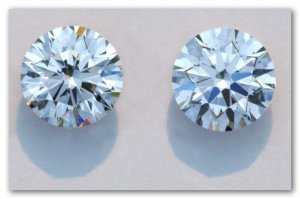- Joined
- Feb 26, 2003
- Messages
- 379
Bruce Harding posted the following response concerning a question on the USFG forum about a Hearts and Arrows scope.
The purpose of a ''Hearts & Arrows'' scope, ''FireScope'' and
''Ideal Scope'', is to show two things:
1) Light-dark contrast between certain facets in a controlled lighting environment, which can be achieved only by maintaining certain pavilion and crown facet SLOPES;
2) Perfection of cutting geometry - like kaleidoscopic symmetry - especially with regard to INDEX ALIGNMENT of crown & pavilion facets.
These scopes are used extensively in the diamond trade, primarily on round brilliant cuts, as a way to indicate quality of cutting geometry.
They might be a good tool for judging the cutting quality of colored stones, with regard to perfection of index symmetry.
Bruce Harding
>>>>>>>>>>>>>>>>>>>>>>>>>>>>>>>>>>>>>>>>>>>>>>>
I supported his post with the following comment:
Obtaining ''optical symmetry'', which is easily evaluated with FireScope like devices, is much harder to achieve than conventional measures of craftsmanship. So much so that diamond cutters who haven''t the time or the skill and do not see the need for this degree of optical and mechanical precision, have called it "needless perfection".
For many this may be true, but how many educated and informed brides do you suppose think their diamond was cut needlessly perfect.

Here is a side by side photo of two American Ideal cut diamonds, one displaying ideal ''Optical Symmetry''.
Michael Cowing
ACA Gemological Laboratory
http://www.acagemlab.com

The purpose of a ''Hearts & Arrows'' scope, ''FireScope'' and
''Ideal Scope'', is to show two things:
1) Light-dark contrast between certain facets in a controlled lighting environment, which can be achieved only by maintaining certain pavilion and crown facet SLOPES;
2) Perfection of cutting geometry - like kaleidoscopic symmetry - especially with regard to INDEX ALIGNMENT of crown & pavilion facets.
These scopes are used extensively in the diamond trade, primarily on round brilliant cuts, as a way to indicate quality of cutting geometry.
They might be a good tool for judging the cutting quality of colored stones, with regard to perfection of index symmetry.
Bruce Harding
>>>>>>>>>>>>>>>>>>>>>>>>>>>>>>>>>>>>>>>>>>>>>>>
I supported his post with the following comment:
Obtaining ''optical symmetry'', which is easily evaluated with FireScope like devices, is much harder to achieve than conventional measures of craftsmanship. So much so that diamond cutters who haven''t the time or the skill and do not see the need for this degree of optical and mechanical precision, have called it "needless perfection".
For many this may be true, but how many educated and informed brides do you suppose think their diamond was cut needlessly perfect.

Here is a side by side photo of two American Ideal cut diamonds, one displaying ideal ''Optical Symmetry''.
Michael Cowing
ACA Gemological Laboratory
http://www.acagemlab.com






300x240.png)